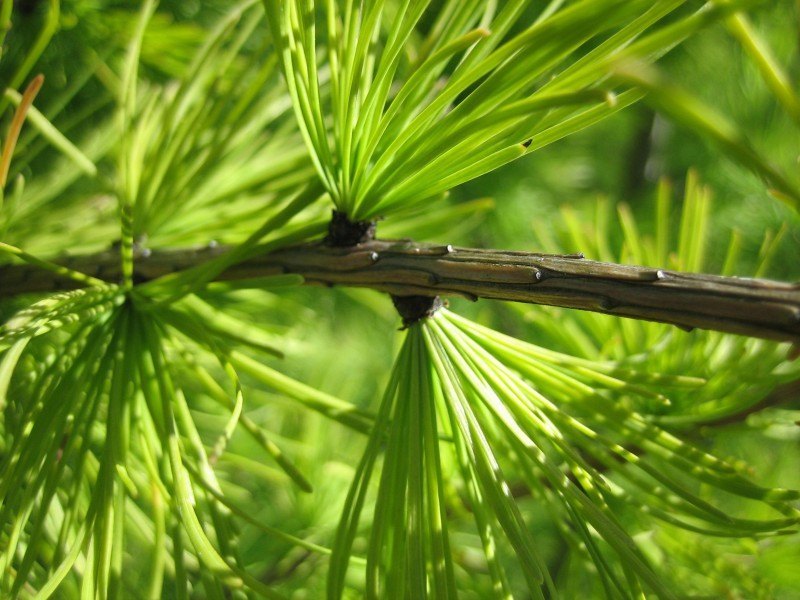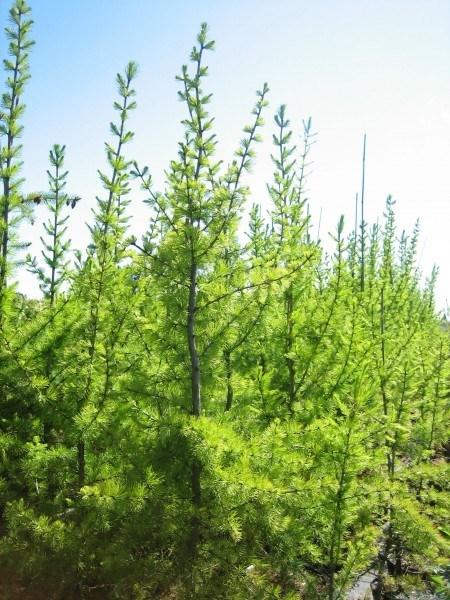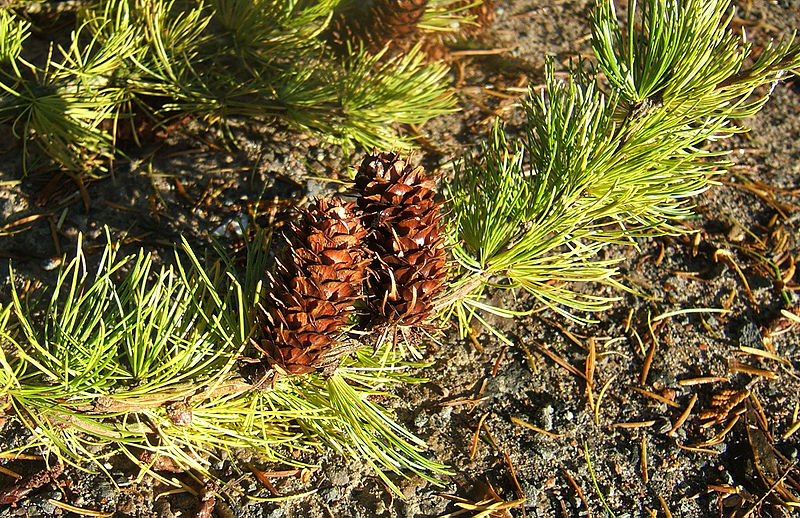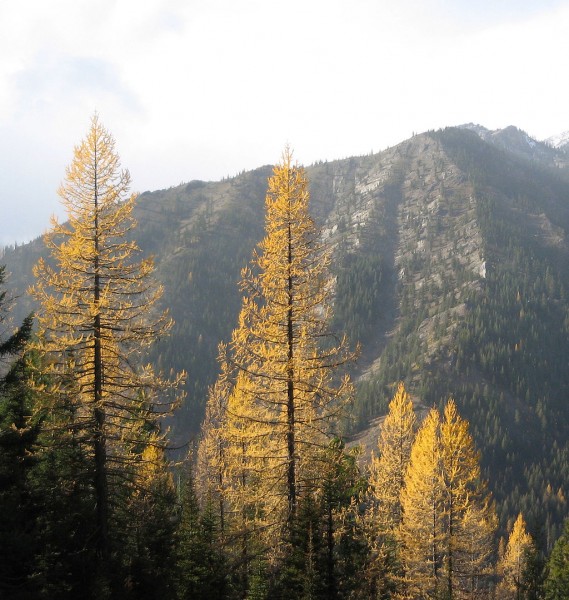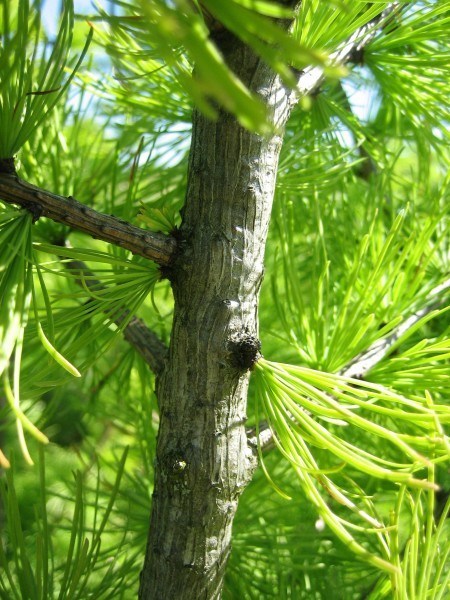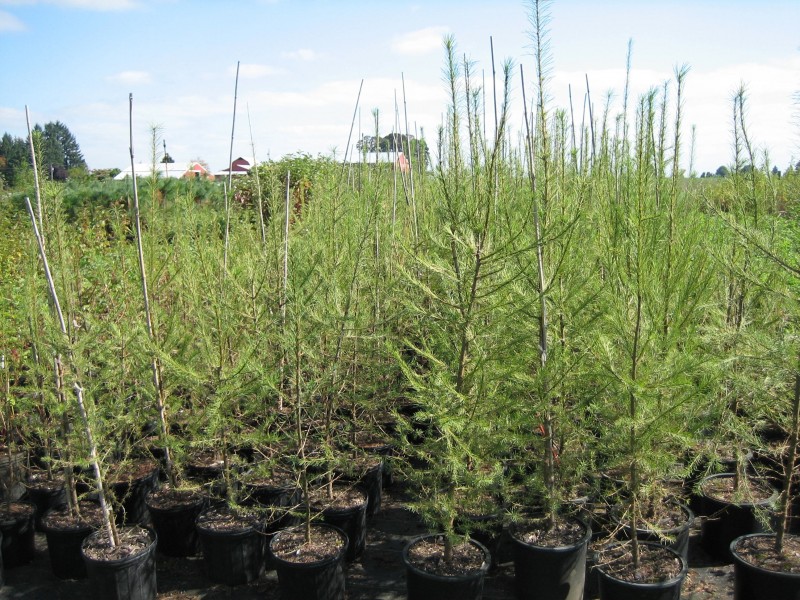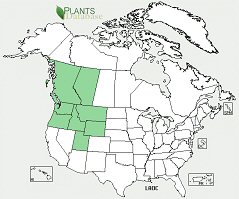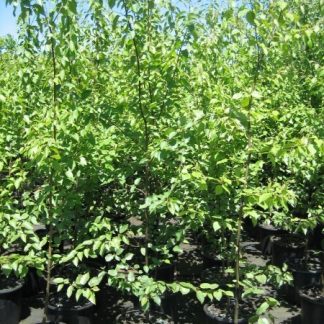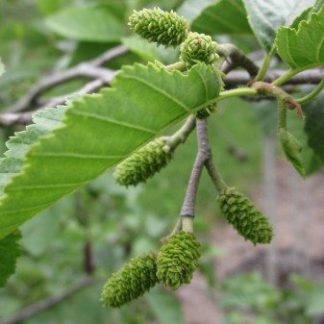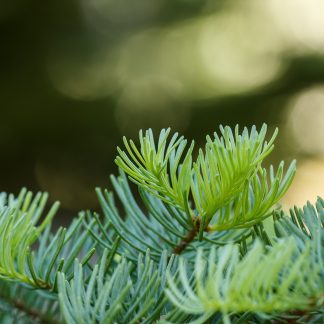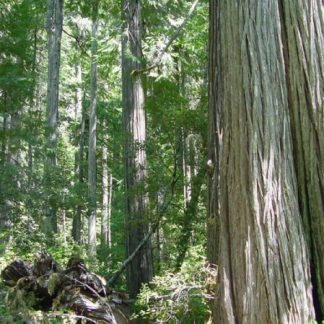Larix occidentalis
western larch
Habit: western larch is a fast growing long lived very large tree having a pyramidal shaped crown with branches growing horizontally outward though slightly drooping near the bottom of the crown. A deep, spreading root system provides good anchorage for these large trees. The bark is thin and scaly when young, turning reddish brown, deeply furrowed and thickening with age. The bright green leaves are needle-like, short and soft, growing in clusters of 15-30. Male cones are very small, female cones only 1-1.5 in (2.5-3.5 cm) with long bracts extending from each scale. Leaves turn bright yellow in autumn and eventually fall.
Ecology: native to alpine and sub alpine forests of the Northwest, ranging from Southern British Columbia and Alberta to Northeastern Oregon and into the Western parts of Montana and Wyoming. Western larch is found in mountain valleys, mixed upland stands preferring northern exposures and growing at elevations ranging from 1500-7000 ft (460-2100 m).
Growing Conditions: full sun to partial shade in moist to wet soil. Tolerate of cold winters.
Larix occidentalis is the only deciduous conifer native to the Northwest. It’s a host tree for many nest-building animals, in the trunks of tree such as woodpeckers, flying squirrels, and owls. Its lumber is one of the most valuable in Western North America because of it’s characteristic of having very dense and strong wood.
Specs
Deciduous Coniferous Tree
30-70 ft (12-20 m)
5-15 ft (1.5-5 m)
3-9

